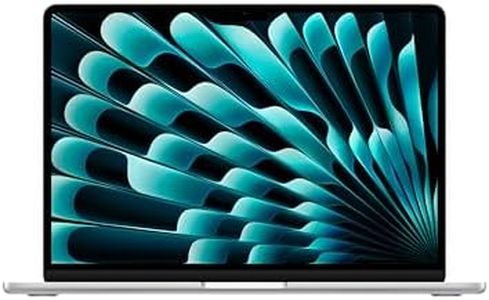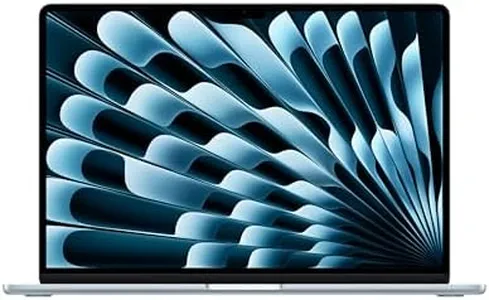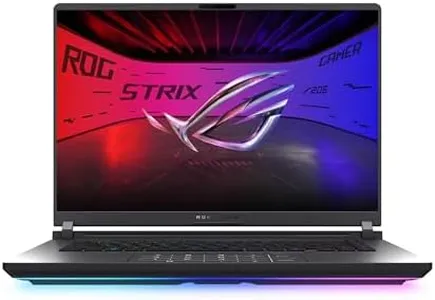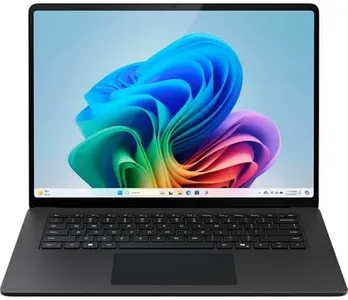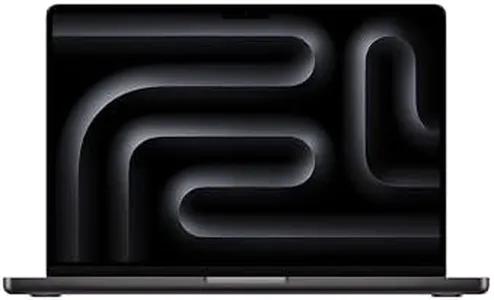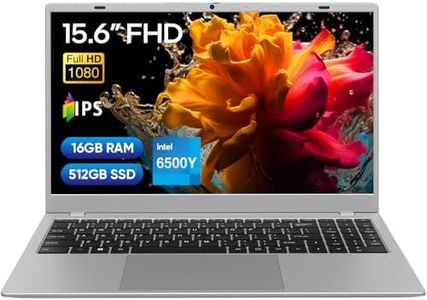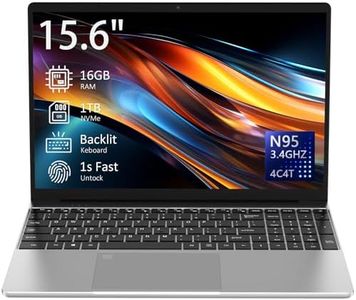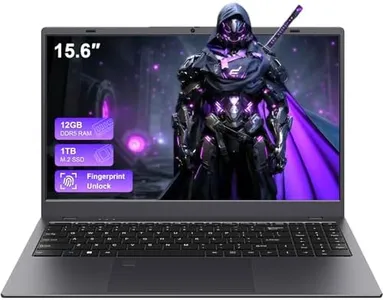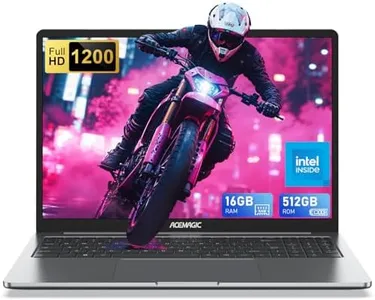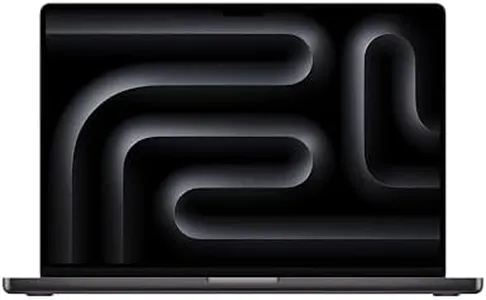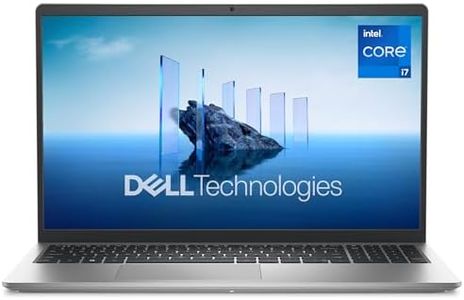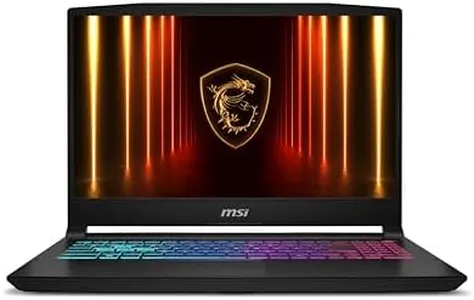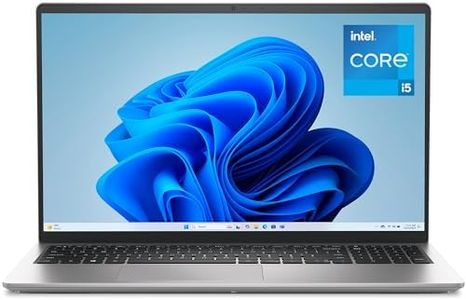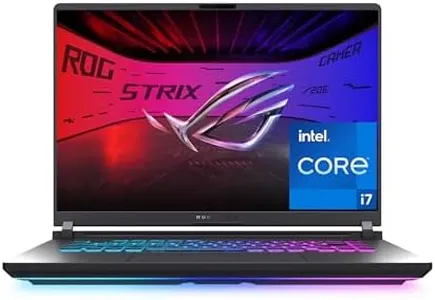10 Best Engineering Laptops 2025 in the United States
Our technology thoroughly searches through the online shopping world, reviewing hundreds of sites. We then process and analyze this information, updating in real-time to bring you the latest top-rated products. This way, you always get the best and most current options available.

Our Top Picks
Winner
Apple 2025 MacBook Air 13-inch Laptop with M4 chip: Built for Apple Intelligence, 13.6-inch Liquid Retina Display, 16GB Unified Memory, 256GB SSD Storage, 12MP Center Stage Camera, Touch ID; Silver
Most important from
4468 reviews
The 2025 MacBook Air with the Apple M4 chip is a light and sleek laptop, great for engineers who prioritize portability and smooth everyday performance. The M4’s 10-core CPU and 8-core GPU offer fast processing and good graphics power for most engineering software, especially those optimized for macOS. With 16GB of unified memory, multitasking and handling complex apps are comfortable, although very heavy 3D modeling or simulations might push its limits. The 256GB SSD storage is fast but on the smaller side, so you may want external storage for large projects.
The 13.6-inch Liquid Retina display is sharp and colorful, helping you see fine details clearly, which is useful for design and drafting work. Battery life stands out with up to 18 hours, meaning you can work unplugged for long stretches, a big plus if you’re mobile. The build quality is premium and lightweight at just under 3 pounds, making it easy to carry around, though the slim design means fewer ports—just two Thunderbolt 4 and a headphone jack—which might require dongles for some connections. Connectivity with Wi-Fi 6E and Bluetooth 5.3 ensures fast and reliable wireless links.
This MacBook Air is well suited for general engineering tasks, coding, and light graphics work, but engineers needing powerful dedicated GPUs or extensive storage might find it limiting. Its seamless integration with other Apple devices and macOS apps adds workflow convenience, especially if you’re already in the Apple ecosystem.
Most important from
4468 reviews
Apple 2025 MacBook Air 15-inch Laptop with M4 chip: Built for Apple Intelligence, 15.3-inch Liquid Retina Display, 16GB Unified Memory, 256GB SSD Storage, 12MP Center Stage Camera, Touch ID; Sky Blue
Most important from
1597 reviews
The Apple 2025 MacBook Air 15-inch with the new M4 chip is a powerful yet lightweight option that could serve well for engineering students or professionals who prioritize portability and long battery life. Its 10-core CPU and 10-core GPU deliver smooth performance for everyday engineering tasks like coding, 3D modeling, and running multiple apps at once. The 16GB of unified memory helps handle complex projects without slowing down, though the 256GB SSD storage is on the smaller side and might require external drives for larger files or software.
The 15.3-inch Liquid Retina display is bright and sharp, making it easy to view detailed diagrams and data with rich colors and crisp text. Battery life is impressive, offering up to 18 hours on a single charge, which is great for working on the go without frequent charging. The build quality is premium and very portable, weighing just over 3 pounds, ideal for carrying between classes or job sites.
Connectivity includes two Thunderbolt 4 ports and MagSafe charging, which supports fast data transfer and charging. Wi-Fi 6E and Bluetooth 5.3 ensure reliable wireless connections. However, the MacBook Air supports only integrated graphics, which might limit performance if you need very intensive 3D rendering or CAD work compared to laptops with dedicated GPUs. For those already in the Apple ecosystem, the seamless integration with iPhone and other Apple devices adds convenience. The macOS environment is stable and efficient but may have compatibility limits with some engineering software mostly developed for Windows. This MacBook Air is best suited for engineers who value portability, battery life, and a high-quality display, though users needing heavy-duty graphics or large local storage might need to consider other options or plan for accessories.
Most important from
1597 reviews
ASUS ROG Strix G16 (2025) Gaming Laptop, 16” ROG Nebula Display 16:10 2.5K 240Hz/3ms, NVIDIA® GeForce RTX™ 5070 Ti GPU, Intel® Core™ Ultra 9 275HX Processor, 32GB DDR5, 1TB SSD, Wi-Fi 7, Win11 Home
Most important from
380 reviews
The ASUS ROG Strix G16 (2025) is a powerful laptop ideal for engineers needing top-tier performance. Its Intel Core Ultra 9 275HX processor combined with the NVIDIA GeForce RTX 5070 Ti graphics card offers ample speed and graphics power to handle demanding engineering software such as CAD or 3D modeling. With 32GB of fast DDR5 memory and a spacious 1TB SSD, it supports smooth multitasking and quick file access, which is essential when working with large projects.
The 16-inch ROG Nebula display with a 2.5K resolution and 240Hz refresh rate delivers sharp and vibrant visuals, making it easier to see fine details and work for long hours with reduced eye strain. ASUS’s advanced cooling system helps keep the laptop running smoothly and quietly during intensive use, preventing overheating. Additional features include tool-less upgrades and a MUX switch to boost graphics performance or save battery life as needed. Connectivity is modern with Wi-Fi 7 and multiple USB ports, allowing connection to various peripherals without hassle.
Weighing around 6 pounds, the laptop is on the heavier side, which may not suit users prioritizing lightweight portability. Its gaming-focused design with RGB lighting might not appeal to those seeking a more subdued professional look, although a stealth mode is available to switch off the lights. This laptop offers strong performance and excellent visuals for engineers who are comfortable with extra weight and gaming-style aesthetics.
Most important from
380 reviews
Buying Guide for the Best Engineering Laptops
Choosing the right engineering laptop is crucial for ensuring that you have the power and capabilities needed to handle demanding tasks such as 3D modeling, simulations, and software development. When selecting an engineering laptop, it's important to consider several key specifications that will impact performance, usability, and overall experience. Understanding these specs will help you make an informed decision that aligns with your specific needs and preferences.FAQ
Most Popular Categories Right Now
